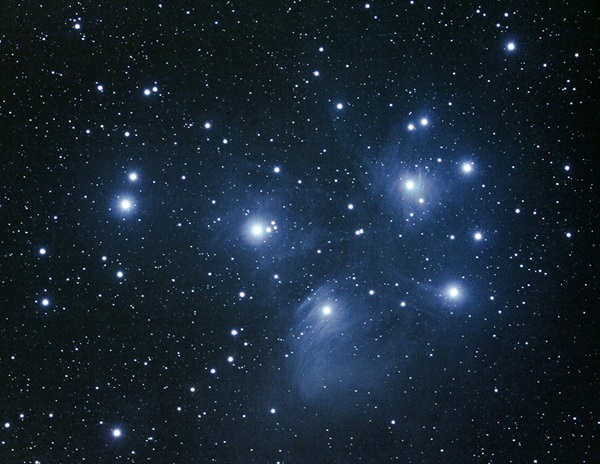The Sky This Week from January 17 to 26 – Astronomy Magazine
The Pleiades star cluster
The dipper-shaped Pleiades (M45) appears high in the south early on January evenings. At a distance of 440 light-years, the Pleiades ranks as the closest object in Charles Messier’s famous catalog.
Jamie Cooper
Two of the finest deep-sky objects shine prominently on January evenings. The Pleiades and Hyades star clusters appear highest in the south in early evening but remain conspicuous until well past midnight. The Pleiades, also known at the Seven Sisters and M45, looks like a small dipper to the naked eye. The larger Hyades forms the V-shaped head of Taurus the Bull. Both look nice without optical aid, but binoculars show them best.
Wednesday, January 22
Although Jupiter passed on the far side of the Sun from Earth less than a month ago, it returns to view in morning twilight this week. Use the waning crescent Moon as a guide this morning. The Moon rises around 5:30 a.m. local time, followed a half-hour later by the giant planet. Magnitude –1.9 Jupiter climbs 4° high 45 minutes before sunrise, when the two objects make a gorgeous sight against the twilight glow.
Thursday, January 23
Venus gleams in the southwestern sky after sunset. The brilliant planet stands out just a half hour after sunset, when it appears nearly 30° above the horizon, and remains on display until after 8 p.m. local time. Shining at magnitude –4.1, it is by far the brightest point of light in the night sky. A telescope shows Venus’ disk, which spans 15″ and appears three-quarters lit.
Friday, January 24
The brightest star in the night sky puts on a nice show January evenings. Gleaming at magnitude –1.5, Sirius shines nearly four times brighter than the next brightest star visible from mid-northern latitudes: Arcturus in the constellation Boötes. (Although Venus shines some 10 times brighter.) Sirius rises shortly after sunset and climbs highest in the south by late evening.
New Moon occurs at 4:42 p.m. EST. At its New phase, the Moon crosses the sky with the Sun and so remains hidden in our star’s glare.






